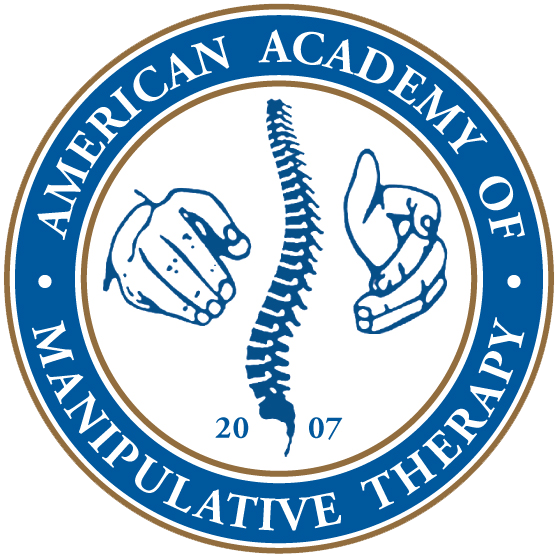Dry Needling and Fibromyalgia: Reversing Centrally-Mediated Chronic Pain
The global burden of chronic pain has reached epidemic proportions; furthermore, it is estimated that 136 million Americans are currently suffering with chronic pain.1 Despite this large number, the diagnosis and management of conditions such as Fibromyalgia Syndrome (FMS) remains poorly understood, widely criticized, and routinely mistreated by physical therapists and medical physicians alike. The use of dry needling is described in the literature as a novel and potentially effective intervention for treating FMS. Despite the evidence supporting neuronal plasticity and centrally-mediated changes in chronic pain, the traditional conservative interventions for FMS have exhausted light exercise, gentle mobilization, and/or electro-thermal modalities, with little more than poor patient outcomes. Perhaps it is time to change the way we treat chronic pain and utilize the best possible evidence to guide us in delivering the highest quality of care for conditions such as FMS.
A large body of evidence supports that exercise has little to no benefit in patients with FMS, and further, that chronic muscle pain appears to worsen with exercise.2,3 McVeigh et al found 85% of patients with FMS reported increased fatigue and pain following exercise.4 Therefore, perhaps the repetitive movement or “more exercise for everyone” model does not fit all categories or patient conditions.
The concept of neuroplasticity, or the structural and functional cortical changes related to chronic pain states, has been described by multiple sources.7,8 Neurophysiologic changes have been identified at multiple levels of the central nervous system including the spinal cord, brainstem, and cortex.9,10,11,12 Coghill et al found specific brain areas of increased activation in chronic pain states including the anterior cingulate cortex, primary somatosensory cortex and prefrontal cortex.9 Yu et al reported specific disruptions in functional connectivity at enkephalin producing pain control centers of the periaqueductal gray in chronic pain conditions.13 Moreover, the mechanism of hypersensitivity has been found to largely occur at the dorsal horn involving wide-dynamic-range neurons (WDR).14 WDR neurons are regulated by diffuse noxious inhibitory controls (DNIC) via the subnucleus reticularis dorsalis in the caudal medulla.14
Patients with FMS are thought to have defective DNIC systems; that is, the WDR neurons, which are responsible for innocuous and noxious stimuli, develop increased receptive fields, thus increasing the region of perceived pain.14 Disrupted brain circuitry has been described by Loggia et al who articulates that decreased activation of the periaqueductal gray area in the midbrain accounts for decreased descending pain modulation in patients with FMS.15 Two studies reported augmented pain processing in patients with FMS via disruptions of cortical areas responsible for the anticipation, attention, and emotional manifestation of pain.16, 17
The role of myofascial trigger points in FMS has been largely utilized in identifying the diagnosis. The biochemical properties of myofascial trigger points, including localized acidity and the increase in inflammatory mediators, may contribute to peripheral changes in patients with FMS.18 That is, sustained peripheral nociceptive input may sensitize dorsal horn neurons and supraspinal structures leading to hyperalgesia, allodynia, and referred pain.19
Peripheral and centrally-mediated changes associated with dry needling have been described in the literature; furthermore, dry needling to specific distal points in the upper or lower extremities has been found to activate sensorimotor cortical networks and deactivate limbic-paralimbic areas.20, 21 Deactivation of limbic areas following dry needling is thought to affect the sensory, cognitive, and affective dimensions of pain.20 Studies utilizing fMRI have demonstrated that dry needling at specific distal points activates the descending pain centers including the PAG.22 Moreover, dry needling with electric stimulation has been shown to activate enkephalinergic inhibitory interneurons, thereby modulating central pain.19 In addition, dry needling has also been found to reduce pain by peripheral mechanisms. One recent study found peripheral opioid receptors contribute to the anti-nociceptive effects of electrical dry needling via activation of cannabinoid CB2R receptors.23 Moreover, the stimulation of ATP release and the subsequent activation of adenosine A1 receptors via electrical dry needling is thought to sharply reduce inflammatory and neurogenic pain.24
The use of dry needling to target solely trigger points within muscles has been challenged.25 Several authors have articulated that the effectiveness of dry needling lies in the mechanical disruption of the integrity of dysfunctional endplate at the neuromuscular junction.19 That is, dry needling to the endplate region is thought to cause increased discharges, decrease acetylcholine stores, and thus reduce spontaneous electrical activity.19 However and importantly, not all patients with fibromyalgia have trigger points, and not all patients with trigger points develop FMS.26 Some investigators have distinguished the “tender points” associated with fibromyalgia from trigger points—i.e. tender points may lack taught bands.27 Given that skeletal muscle in patients with FMS has been shown to have altered oxygen utilization,28 perhaps dry needling can be useful to help improve muscle vascularity and oxygenation, and hence reduce sustained peripheral nociception.29,30
Nevertheless, the efficacy for the use of dry needling in patients with FMS is limited; that is, to date, there are few high methodologic quality studies on the topic. Two recent systematic reviews provide conflicting evidence for the use of acupuncture (i.e. the insertion of needles without injectate without the intent of moving qi along traditional Chinese meridians) in FMS—i.e. both concluding further high quality research is needed before definitive conclusions can be made in regards to efficacy.31,32 In a randomized controlled trial, Deluze et al found electroacupuncture provided significant improvements in pain perception and sleep quality (limbic system) in patients with FMS.33 Additionally, a recent systematic review and meta-analysis found that dry needling may be effective in the immediate and short-term in patients with upper quarter myofascial pain syndrome.34
AUTHOR
Hector E. Rodriguez, PT, DPT, Cert. DN
Fellow-in-Training, AAMT Fellowship in Orthopaedic Manual Physical Therapy
Senior Physical Therapist, Thrive Wellness & Rehab, El Paso, TX
REFERENCES
- Tsang A , Von Korff M, Lee S, Alonso J, Karam J. Common Chronic Pain Conditions in Developed and Developing Countries: Gender and Age Differences and Comorbidity With Depression-Anxiety Disorders. Pain. 2009;10(5): 553.
- Fricton J. Myofascial pain. Baillière’s Clinical Rheumatology. 1994;8(4): 857-880.
- Mengshoel AM, Vollestad NK, Forre O: Pain and fatigue induced by exercise in fibromyalgia patients and sedentary healthy subjects. Clin Exp Rheumatol. 1995;13: 477-482.
- Vierck, C, Staud R, Price D. The Effect of Maximal Exercise on Temporal Summation of Second Pain (Windup) in Patients With Fibromyalgia Syndrome. Pain. 2001;2(6): 334-344.
- Hebb, D. O. Organization of behavior. New York: Wiley. Journal of Clinical Psychology. 1950;6(3): 307-307.
- Melzack R, Wall P. Pain Mechanisms: A New Theory. Science. 1965; 150(3699): 971-978.
- Melzack, Ronald, Terence J. Coderre, Joel Katz, and Anthony L. Vaccarino. Central Neuroplasticity and Pathological Pain. Annals of the New York Academy of Sciences. 2001; 157-74.
- Wand, Benedict Martin, Luke Parkitny, Neil Edward O’Connell, Hannu Luomajoki, James Henry Mcauley, Michael Thacker, and G. Lorimer Moseley. Cortical Changes in Chronic Low Back Pain: Current State of the Art and Implications for Clinical Practice. Manual Therapy. 2011; 15-20.
- Coghill R, McHaffie J, Yen Y. Neural correlates of interindividual differences in the subjective experience of pain. Proceedings of the National Academy of Sciences. 2003;100(14): 8538-8542.
- Sandkühler J. Understanding LTP in pain pathways. Molecular Pain. 2007;3(1): 9.
- Tinazzi M, Fiaschi A, Rosso T, et al. Neuroplastic changes related to pain occur at multiple levels of the human somatosensory system: A somatosensory-evoked potential study in patients with Cervical Radicular pain. The Journal of Neuroscience. 2000; 20(24): 9277–9283.
- Benoist J, Gautron M, Guilbaud G. Experimental model of trigeminal pain in the rat by constriction of one infraorbital nerve: changes in neuronal activities in the somatosensory cortices corresponding to the infraorbital nerve. Experimental Brain Research. 1999;126(3): 383-398.
- Yu R, Gollub R, Spaeth R, Napadow V, Wasan A, Kong J. Disrupted functional connectivity of the periaqueductal gray in chronic low back pain. NeuroImage: Clinical. 2014;6: 100-108.
- Van Wijk G, Veldhuijzen D. Perspective on Diffuse Noxious Inhibitory Controls as a Model of Endogenous Pain Modulation in Clinical Pain Syndromes. The Journal of Pain. 2010;11(5): 408-419.
- Loggia M, Berna C, Kim J et al. Disrupted Brain Circuitry for Pain-Related Reward/Punishment in Fibromyalgia. Arthritis & Rheumatology. 2014;66(1): 203-212.
- Gracely R, Petzke F, Wolf J, Clauw D. Functional magnetic resonance imaging evidence of augmented pain processing in fibromyalgia. Arthritis & Rheumatism. 2002;46(5): 1333-1343.
- Burgmer M, Pogatzkizahn E, Gaubitz M, et al. Altered brain activity during pain processing in fibromyalgia. NeuroImage. 2009;44(2): 502-508.
- Shah JP, Danoff JV, Desai MJ et al. Biochemicals associated with pain and inflammation are elevated in sites near to and remote from active myofascial trigger points. Arch Phys Med Rehabil. Jan 2008;89(1): 16-23.
- Cagnie B, Dewitte V, Barbe T, Timmermans F, Delrue N, Meeus M. Physiologic effects of dry needling. Current pain and headache reports. Aug 2013;17(8): 348.
- Chae Y, Chang DS, Lee SH, et al. Inserting needles into the body: a meta-analysis of brain activity associated with acupuncture needle stimulation. J Pain. Mar 2013;14(3): 215-222.
- Biella G, Sotgiu ML, Pellegata G, Paulesu E, Castiglioni I, Fazio F. Acupuncture produces central activations in pain regions. Neuroimage. Jul 2001;14: 60-66.
- Hui K, Liu J, Marina O et al. The integrated response of the human cerebro-cerebellar and limbic systems to acupuncture stimulation at ST 36 as evidenced by fMRI. NeuroImage. 2005;27(3): 479-496.
- Su T, Zhang L, Peng M et al. Cannabinoid CB2 Receptors Contribute to Upregulation of β-endorphin in Inflamed Skin Tissues by Electroacupuncture. Molecular Pain. 2011;7(1): 98.
- Goldman N, Chen M, Fujita T et al. Adenosine A1 receptors mediate local anti-nociceptive effects of acupuncture. Nat Neurosci. 2010 July; 13(7): 883–888.
- Dunning J, Butts R, Mourad F, Young I, Flannagan S, Perreault T. Dry needling: a literature review with implications for clinical practice guidelines. Physical Therapy Reviews, 2014; 19(4): 252-265.
- Castro-Sanchez A, Aguilar-Ferrandiz M, Mataran-Penarrocha G, Sanchez-Joya M, Arroyo-Morales M, Fernandez-de-las-Penas C. Short-term effects of a manual therapy protocol on pain, physical function, quality of sleep, depressive symptoms, and pressure sensitivity in women and men with fibromyalgia syndrome. Clin J Pain. 2014;30: 589-597.
- Chae Y, Chang DS, Lee SH, et al. Inserting needles into the body: a meta-analysis of brain activity associated with acupuncture needle stimulation. J Pain. Mar 2013;14(3): 215-222.
- Melzack R, Stillwell DM, Fox EJ. Trigger points and acupuncture points for pain: correlations and implications. Pain.1977;3: 3-23.
- Cagnie B, Barbe T, De Ridder E, et al. The influence of dry needling of the trapezius muscle on muscle blood flow and oxygenation. J Manipulative Physiol Ther. 2012;35(9): 685–91.
- Sandberg M, Larsson B, Lindberg LG, et al. Different patterns of blood flow response in the trapezius muscle following needle stimulation (acupuncture) between healthy subjects and patients with fibromyalgia and work-related trapezius myalgia. Eur J Pain. 2005;9(5): 497–510.
- Mayhew E, Ernst E. Acupuncture for fibromyalgia—a systematic review of randomized clinical trials. Rheumatology. 2007;46 (5): 801-804.
- Bai J, Guo Y, Wang H, et al. Efficacy of acupuncture on fibromyalgia syndrome: a Meta-analysis. J Tradit Chin Med. August 2014; 34(4): 381-391.
- Deluze C, Bosia L, Zirbs A, Chantraine A, Vischer TL. Electroacupuncture in fibromyalgia: results of a con- trolled trial. BMJ. 1992;305: 1249-1252.
- Kietrys DM, Palombaro KM, Azzaretto E, et al. Effectiveness of dry needling for upper-quarter myofascial pain: a systematic review and meta-analysis. J Orthop Sports Phys Ther 2013;43: 620-634.





